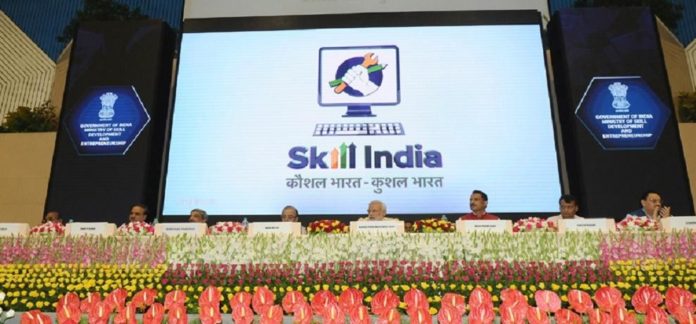In a bid to provide a boost to ‘Skill India Mission’, on October 11, 2017, Union Cabinet approved two new skill development schemes named Skills Acquisition and Knowledge Awareness for Livelihood Promotion (SANKALP) and Skill Strengthening for Industrial Value Enhancement (STRIVE). Both these schemes are result oriented programmes focusing on vocational education and training.
 Salient Features of Skills Acquisition and Knowledge Awareness for Livelihood Promotion (SANKALP) Scheme:
Salient Features of Skills Acquisition and Knowledge Awareness for Livelihood Promotion (SANKALP) Scheme:
SANKALP is a centrally sponsored scheme having financial outlay Rs 4,455 crore out of which 3300 crore will be in the form of a loan from World Bank.
- Under this scheme, over 50 Trainers and Assessors academies with self-sustainable models will be set up in priority sectors.
- The scheme also has provision to set up additional academies to plug sectoral and geographical gaps.
- Underprivileged and marginalised sections of the society including women, Scheduled Castes (SCs), Schedule Tribes (STs) and Persons with Disabilities (PWD) will be provided skill training opportunities under SANKALP.
Salient Features of Skill Strengthening for Industrial Value Enhancement (STRIVE) Scheme:
STRIVE is a central sector scheme having financial outlay Rs 2200 crore out of which half the amount will be in the form of loan assistance from World Bank.
- Under STRIVE scheme, emphasis will be laid on incentivizing Industrial Training Institutes (ITIs) to improve overall performance including apprenticeship by involving Small and Medium Enterprises (SMEs), business associations and industry clusters.
- A robust mechanism for delivering quality skill development training will be developed. This will be done by strengthening institutions such as State Skill Development Missions (SSDMs), National Skill Development Corporation (NSDC), Sector Skill Councils (SSCs), ITIs and National Skill Development Agency (NSDA) etc.
- National Skills Qualification Framework (NSQF) including National Quality Assurance Framework (NQAF) across central and state government schemes will be universalised in order to ensure standardization in skill delivery, content and training output.
Expected Outcomes from these Schemes:
It is expected that both the schemes will being about Institutional reforms and will improve quality & market relevance of skill development training programs in long and short term Vocational Education and Training (VET).
- Implementation of these two schemes will streamline efforts of various central, state and private sector institutions and will thereby avoid duplication of activities.
- These schemes will contribute to develop a skilling ecosystem that will support India’s rise in the Ease of Doing Business Index by steady supply of skilled workforce to the industry.





